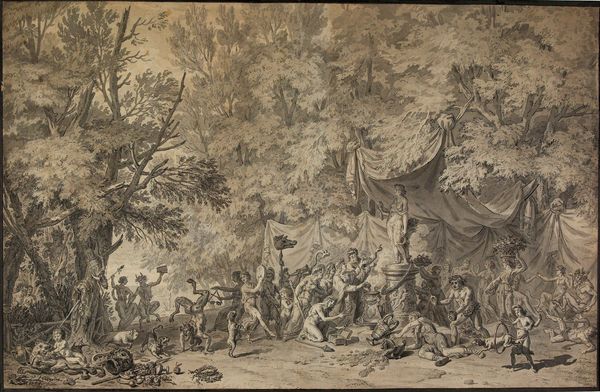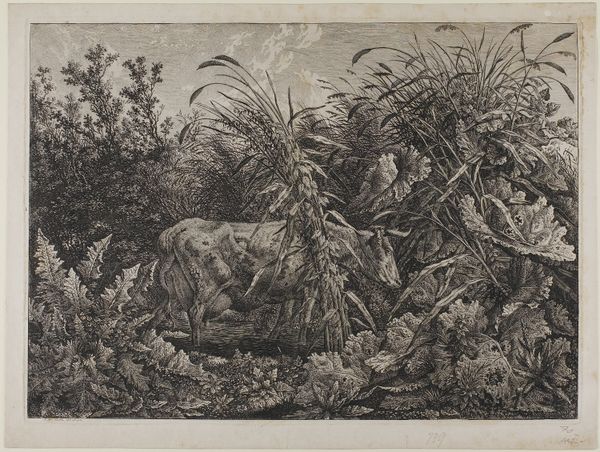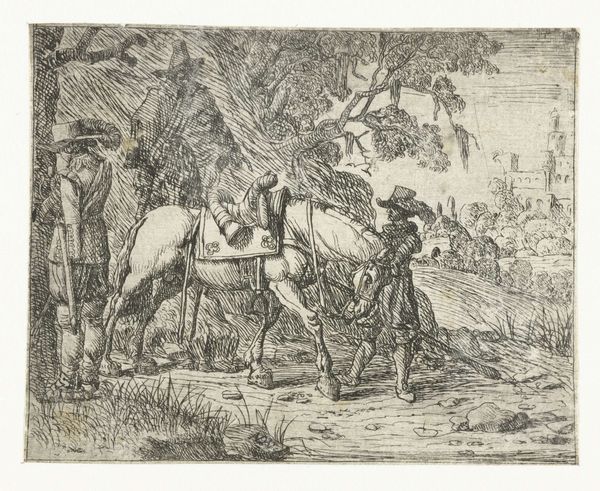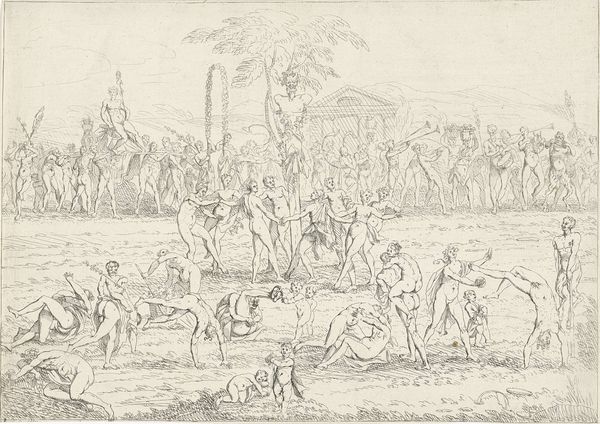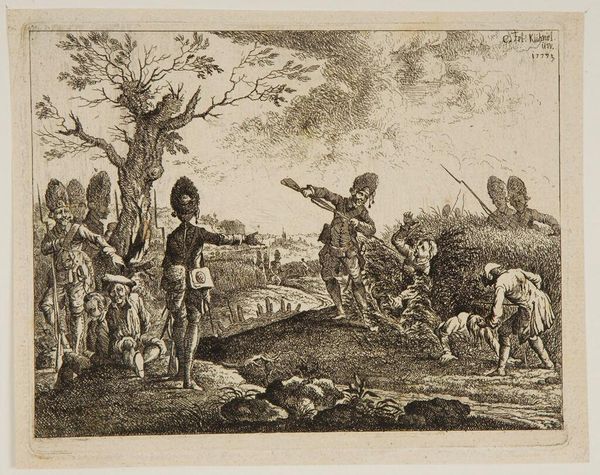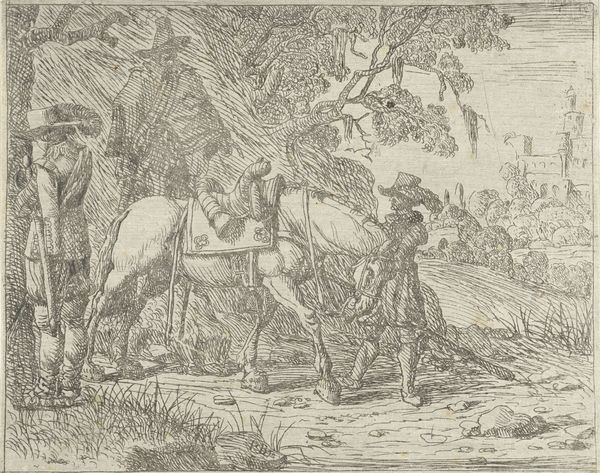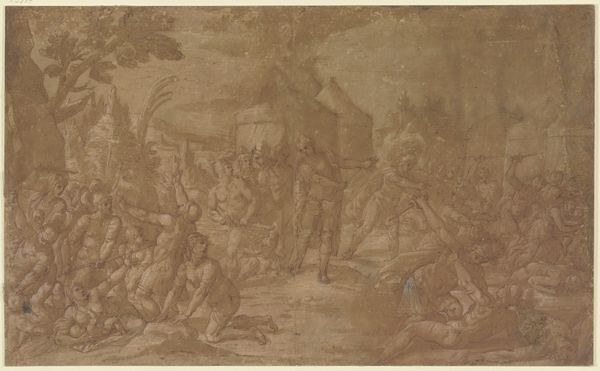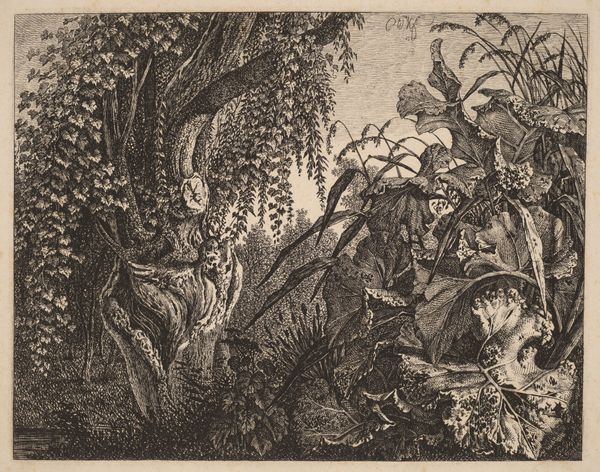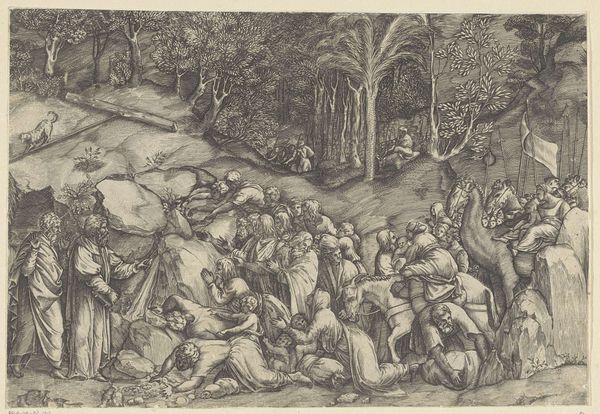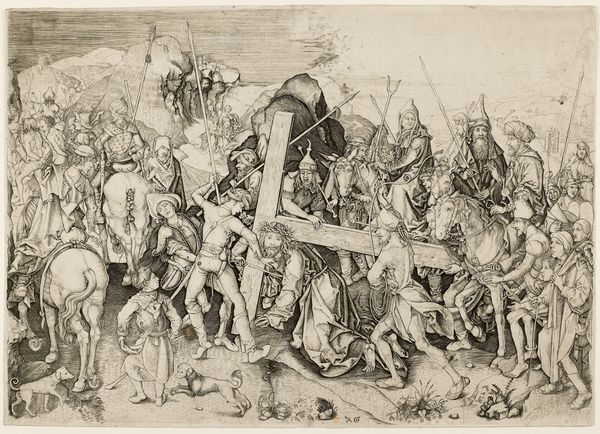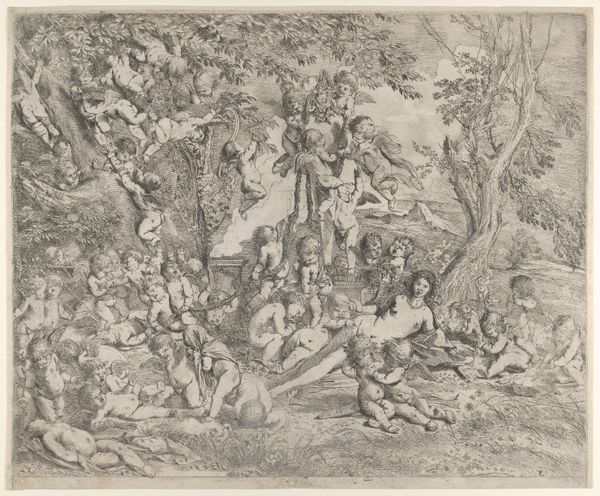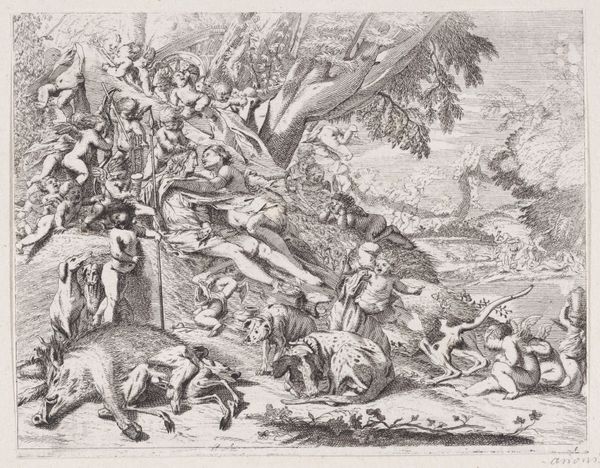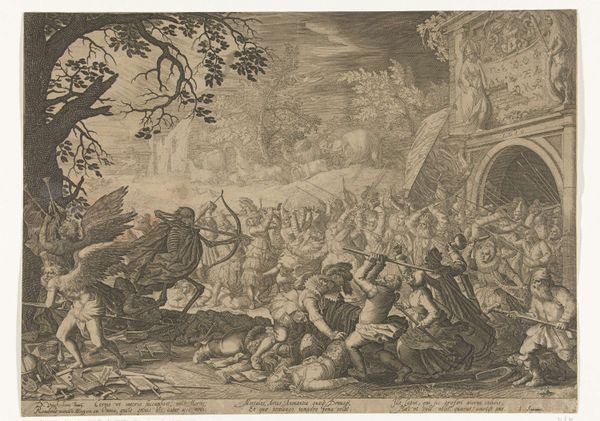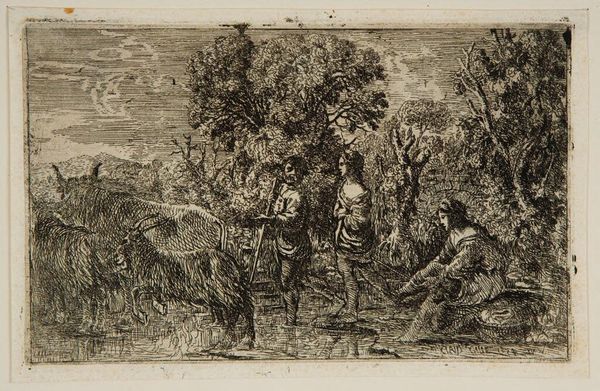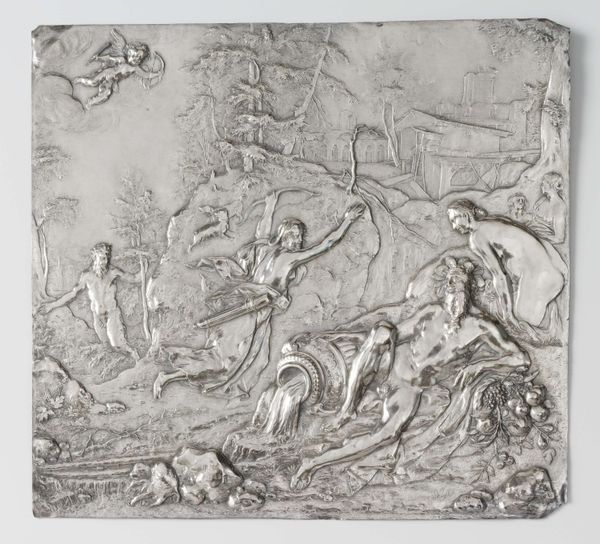
metal, relief, sculpture
#
allegory
#
metal
#
relief
#
landscape
#
mannerism
#
figuration
#
sculpture
#
history-painting
#
nude
Dimensions: height 25.8 cm, width 35.0 cm, thickness 1.0 cm
Copyright: Rijks Museum: Open Domain
Curator: Before us is Paulus Willemsz. van Vianen's "The Feast of the Gods," crafted around 1604. This impressive sculpture, realized in metal relief, is currently held in the Rijksmuseum collection. Editor: My initial impression is one of complex sensuality—a swirling mass of nudes interwoven with a delicately rendered landscape, all cast in an almost ethereal, shimmering metal. Curator: Indeed. Van Vianen masterfully employs Mannerist techniques here. The elongated figures, the dynamic poses, and the overall sense of refined artifice all speak to that stylistic vocabulary. Note how the landscape isn’t just a backdrop, but actively participates in the narrative. Editor: That active participation feels deeply performative to me. "The Feast of the Gods," presented in this opulent, idealized setting, begs us to question who gets to participate in such feasts—who is invited to this table and who is excluded, both in the mythical world and in the world that the sculpture was made for. What commentary does this sculpture provide on the hierarchies within the 17th century Dutch Republic? Curator: An interesting interpretation! Structurally, observe how the artist balances the chaotic energy of the figures with the meticulous details of the natural environment. The contrast between the smooth, polished bodies and the rough textures of the trees is quite striking. The allegorical element invites us to interpret the gods not merely as figures from mythology, but as symbols of human desire, excess, and mortality. Editor: Right. I read the profusion of nude bodies not as pure celebration but also as a study in vulnerability, highlighting the gendered and raced aspects of that vulnerability. Consider, for instance, the way classical mythology has historically been used to justify the marginalization and exploitation of various groups by creating and maintaining gendered archetypes and biased ideas about beauty. Curator: It’s compelling how you weave together the art historical and the socio-political. Ultimately, whether one sees "The Feast of the Gods" as a celebration of artistic skill, or as an invitation to critique societal structures, this is a truly unique sculpture. Editor: Indeed. Its lasting power stems not just from van Vianen’s mastery of form, but also from its capacity to provoke enduring questions about power, privilege, and representation.
Comments
rijksmuseum about 2 years ago
⋮
In the centre foreground is the seated figure of Saturn, with a scythe and an hourglass. His wife, Rhea, is at the far right. With their sons Jupiter (ruler of the sky), Pluto (ruler of the underworld) and Neptune (ruler of the sea) and other gods, they partake of a meal, which, however, does not seem in the least bit festive. The gloom cast over this scene clouds our understanding of its meaning.
Join the conversation
Join millions of artists and users on Artera today and experience the ultimate creative platform.
